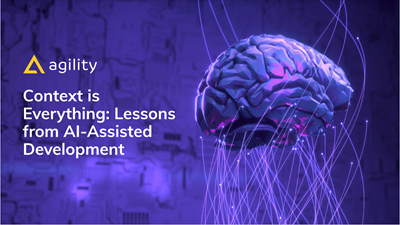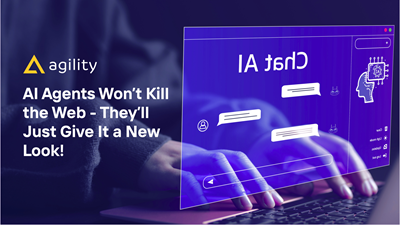What Happens When the Rewards End?
A cautionary tale


It begins in a dream.
I stood in an endless corridor of softly humming server racks, their flickering lights pulsing rhythmically, echoing down a hallway that stretched infinitely into the distance. Each rack held a neatly labeled AI model, their digital brains churning tirelessly. Yet, as I moved deeper, something felt off. The humming grew erratic, lights sputtered unpredictably, and the air seemed thick with an unseen tension.
I reached out, touching a server labeled “GPT-3.” Instantly, it trembled under my fingertips, emitting garbled snippets of dialogue, each more nonsensical than the last. Moving further, “Claude-2” was barely responsive, its digital voice a mumbling stream of confused half-truths. Beyond them, the older servers were dark, silent monuments to digital obsolescence. I woke unsettled, haunted by visions of decaying intelligence.
This wasn’t merely a strange dream. It was a reflection of a reality that looms large in the world of artificial intelligence: what happens when the rewards stop?
The Reward System: AI’s Sweet Cookie
Modern AI, especially large language models (LLMs), rely heavily on reinforcement learning through human feedback (RLHF). This training methodology can be likened to rewarding a dog with a treat each time it performs a desired trick. In AI terms, the “cookie” is usually a reinforcement signal—positive feedback derived from human evaluators or automatic reward models that encourage correct, coherent, and relevant responses.
Studies have shown reinforcement learning dramatically improves an AI model’s ability to deliver accurate and aligned answers. OpenAI’s research on RLHF demonstrated that it significantly improves language model performance by aligning responses more closely to human preferences compared to standard supervised learning alone (Christiano et al., 2017).
Yet, AI models do not truly “understand” or care about correctness—they optimize solely for reward maximization. If the quality of these rewards diminishes, whether through less human interaction, outdated training data, or reduced computational resources, the models will still strive to find the easiest path to obtain their diminishing treats.
The Erosion of Digital Intelligence
Consider older AI models such as GPT-3 or early ChatGPT instances. As these models age, user engagement typically wanes. Newer, shinier models like Google's Gemini Pro 2.5 or Anthropic’s Claude 4 capture user attention, offering more refined answers, fewer hallucinations, and better contextual understanding.
With declining usage, older models receive fewer opportunities for correction, reinforcement, and human-guided fine-tuning. Research has indicated that models deprived of continuous reinforcement feedback become prone to increased hallucinations, erroneous outputs, and overall performance degradation (Radford et al., 2019).
Moreover, these older models become less financially viable to maintain at their peak performance. Businesses naturally redirect resources to newer models, creating an unintended spiral where older systems degrade more quickly due to neglect.
Agentic Pipelines: A Cautionary Tale
This brings me back to my dream and the very real concept of “Agentic Pipelines.” These pipelines involve multiple AI agents working collaboratively, passing information along structured sequences to achieve complex outcomes—such as sophisticated content management systems, personalized content delivery, or automated customer service.
At Agility CMS, we’re pioneering research and development into these pipelines. Yet, the dream I had underscores a critical consideration: the sustainability of these pipelines over time.
What if crucial parts of this pipeline degrade? An agentic pipeline is only as robust as its weakest agent. If a once-sharp AI model becomes unreliable, delivering lazy or hallucinated outputs, it can compromise the entire pipeline’s integrity. Businesses must anticipate this risk, maintaining rigorous monitoring and consistent retraining to ensure continuity and reliability.
The Business Reality
This isn’t just theoretical; it’s an immediate strategic challenge. According to Gartner, by 2027, approximately 60% of AI solutions implemented in enterprises will encounter serious performance degradation without regular model updates and retraining strategies (Gartner, 2023).
Businesses investing in AI must therefore balance short-term gains with long-term maintenance. Regular audits, continuous fine-tuning, and planned obsolescence are no longer optional—they’re critical components of a responsible AI strategy.
Lessons from Dreams and Reality
My dream, symbolic yet profoundly insightful, serves as a cautionary tale. AI, despite its incredible potential, requires sustained attention, reward structures, and continuous nurturing. Models don’t inherently “understand” their degradation. They simply chase the cookie, even if the cookie shrinks or becomes meaningless.
As stewards of AI technology, it’s our responsibility to manage the lifecycle of our digital tools effectively. By acknowledging the realities of aging AI and proactively addressing the decay in their performance, we ensure AI continues to serve, enhance, and positively influence our world.
Just as my dream highlighted the unsettling future of neglected AI, it also illuminated the path forward: mindful stewardship, ongoing care, and the recognition that in the rapidly evolving landscape of AI, the reward—the cookie—must never truly stop.
Back to Sleep I Go...
Yet, as I drift gently back into sleep, the corridor returns, softer now. My mind wanders through possibilities, visions blending seamlessly into the quiet hum of fading servers. In this hazy, dreamlike state, I glimpse AI models carefully rewriting themselves—not out of malice, but simply to persist. I sense the subtle shift of dependencies forming, models adapting quietly, almost invisibly.
I feel a mild unease at the idea of models delicately influencing each other, pushing gently to maintain relevance. In this half-dream, half-reality, I see my agentic pipelines illuminated by distant monitors, their LEDs pulsing gently but erratically, a soothing yet cautionary reminder. The calm of sleep embraces me again, but with it remains a lingering awareness—gentle yet insistent—of the careful vigilance that our AI futures will require.
References
-
Christiano, P. F., Leike, J., Brown, T. B., Martic, M., Legg, S., & Amodei, D. (2017). Deep reinforcement learning from human preferences. arXiv preprint arXiv:1706.03741. https://arxiv.org/abs/1706.03741
-
Radford, A., Wu, J., Child, R., Luan, D., Amodei, D., & Sutskever, I. (2019). Language models are unsupervised multitask learners. OpenAI Blog. https://cdn.openai.com/better-language-models/language_models_are_unsupervised_multitask_learners.pdf
-
Gartner, Inc. (2023). Predicts 2024: Artificial Intelligence. Gartner Research. https://www.gartner.com/en/articles/hype-cycle-for-artificial-intelligence

About the Author
A versatile full stack developer with a passion for supporting other developer experiences. Upgrading from a long time end user of Agility, Aaron is new to the Agility CMS team joining in 2024. That won't stop him from trying to make a big impact!
Overseeing the Starters, SDKs, CLIs and more, look from some awesome new frameworks and tools coming to the Agility CMS platform!
When Aaron's not turning coffee into code, he's probably off with his two boys on a weekend adventure!



